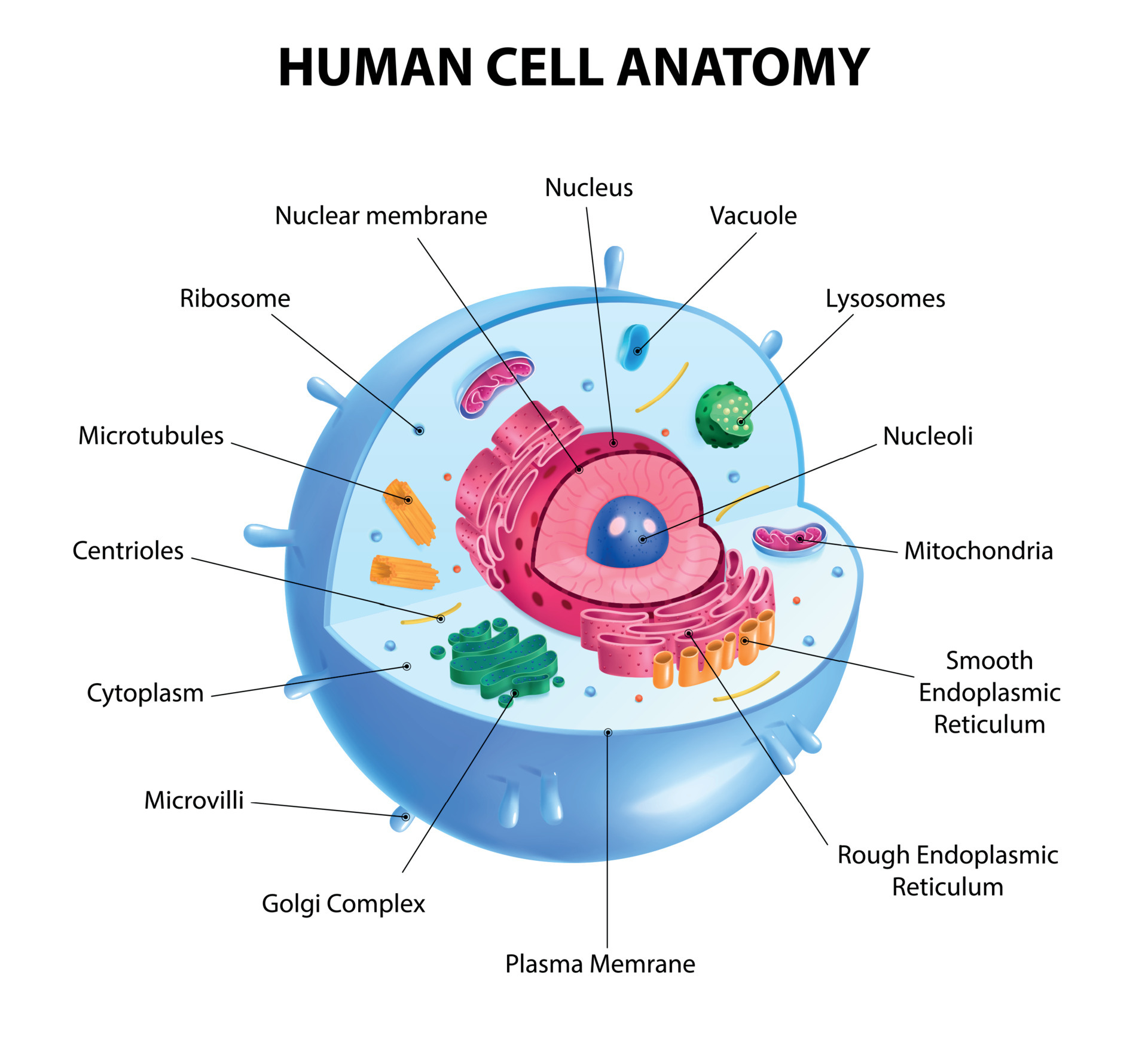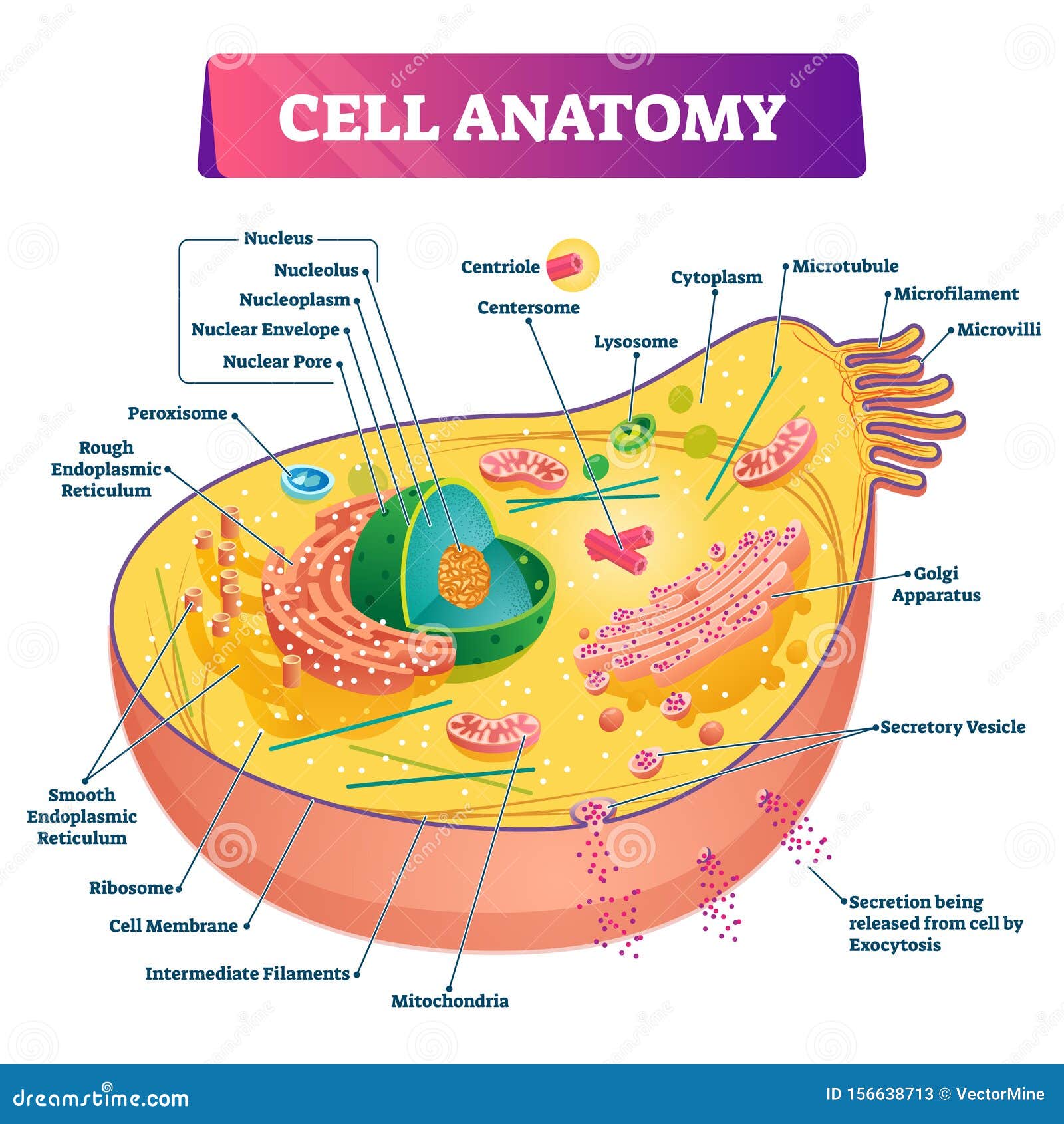
Plant Cell Diagram Wallpapers Power
A Labeled Diagram of the Animal Cell and its Organelles There are two types of cells - Prokaryotic and Eucaryotic. Eukaryotic cells are larger, more complex, and have evolved more recently than prokaryotes. Where, prokaryotes are just bacteria and archaea, eukaryotes are literally everything else.

[DIAGRAM] Diagram Of Cytosol
Diagram of a typical plant cell: Diagram of a plant cell with components labeled. Image modified from OpenStax Biology. Both animal and plant cells have mitochondria, but only plant cells have chloroplasts. Plants don't get their sugar from eating food, so they need to make sugar from sunlight. This process (photosynthesis) takes place in the.

Labeled Animal Cell Diagram
Diagram Of Animal Cell Animal cells are eukaryotic cells that contain a membrane-bound nucleus. They are different from plant cells in that they do contain cell walls and chloroplast. The animal cell diagram is widely asked in Class 10 and 12 examinations and is beneficial to understand the structure and functions of an animal.

Human Cell Diagram 6406474 Vector Art at Vecteezy
When a cell wall is present or absent, animal cells can easily be recognized from plant cells. These cells have several membrane-bound organelles surrounding the nucleus. Labeled Diagram of Animal Cell. The diagram of the structural organization of an animal cell is presented below, with the organelles identified and labeled:
Cell Anatomy (3D Labeled Diagram) Science
The well labelled diagram of an animal cell consists of all the organelles and the structural components of an animal cell. An animal cell is the basic unit of any living animal. All the cells found in any living animal are made up of similar components and organelles and are eukaryotic cells. Hence, a well labelled diagram of animal cells will be quite uniform amongst all the different.

South Pontotoc Biology Plant and Animal Cell Diagrams
Biology library 37 units · 127 skills Unit 1 Intro to biology Unit 2 Chemistry of life Unit 3 Water, acids, and bases Unit 4 Properties of carbon Unit 5 Macromolecules Unit 6 Elements of life Unit 7 Energy and enzymes Unit 8 Structure of a cell Unit 9 More about cells Unit 10 Membranes and transport Unit 11 More about membranes

Pin by james paterson on A (growing) list of people, places and things
Cell organelles are specialized entities present inside a particular type of cell that performs a specific function. There are various cell organelles, out of which, some are common in most types of cells like cell membranes, nucleus, and cytoplasm.

Cell Anatomy Vector Illustration. Labeled Educational Structure Diagram
Animal cells are eukaryotic cells, meaning they possess a nucleus and other membrane-bound organelles. Unlike plant cells, animal cells do not have cell walls, allowing for more flexibility in shape and movement. A plasma membrane encloses the cell contents of both plant and animal cells, but it is the outer coating of an animal cell.

FileCell Structure , Cell Diagram.png Wikimedia Commons
cell, in biology, the basic membrane-bound unit that contains the fundamental molecules of life and of which all living things are composed.A single cell is often a complete organism in itself, such as a bacterium or yeast.Other cells acquire specialized functions as they mature. These cells cooperate with other specialized cells and become the building blocks of large multicellular organisms.

Cell Membrane Images Worksheet Answers
Labeled diagram of a typical animal cell Nucleus. The nucleus contains all the genetic material in a cell. This genetic information is called deoxyribonucleic acid (DNA). DNA contains all the instructions for making proteins, which control all of the body's activities. Therefore, the nucleus is like the manager's office of the cell.

Animal Cell Diagram Organelles Simple Functions And Diagram Gambaran
The third and fourth diagrams are animal cell diagram worksheets. Quiz yourself by filling in the blanks. Unlabeled Animal Cell Diagram Finally, an unlabeled version of the diagram is included at the bottom of the page, in color and black and white. This may be useful as a printable poster for the classroom, or as part of a presentation or report.

NCERT Class 9 Science Solutions Chapter 5 The Fundamental Unit of Life
Cell diagram labeled Cell diagram unlabeled Learn faster with interactive cell quizzes Sources + Show all What are the parts of a cell? There exist two general classes of cells: Prokaryotic cells: Simple, self-sustaining cells (bacteria and archaea) Eukaryotic cells: Complex, non self-sustaining cells (found in animals, plants, algae and fungi)

Explain the nucleus of a cell with a neat labeled diagram Science
I've created two interactive diagrams for an upcoming open textbook for high-school level biology. The cell structure illustrations for these diagrams were generated in BioRender. Both diagrams feature a drag-and-drop labelling activity created with H5P here on Learnful. These h5p resources are made available openly with the CC BY license.

Cell Diagram Labeled Simple SexiezPicz Web Porn
What exactly is its job? The plasma membrane not only defines the borders of the cell, but also allows the cell to interact with its environment in a controlled way. Cells must be able to exclude, take in, and excrete various substances, all in specific amounts.

Cell Structure
Distinguishing characteristics of a plant cell are its cell wall, chloroplasts, and large vacuole. A plant cell is the basic building block of a plant. Plant cells, like all eukaryotic cells, contain a nucleus and other organelles, each with its distinct functions. However, plant cells also possess unique components that differentiate them from.

animal cell diagram easy Kris Hammett
1. Prokaryotes are the simplest cells without a nucleus and cell organelles. 2. Prokaryotic cells are the smallest cells (1-10 μm). 3. Unicellular and earliest to evolve (~4 billion years ago), still available. 4. The cell wall is rigid. ADVERTISEMENTS: 5. These cells reproduce asexually. 6. They include bacteria and archaea. 7.